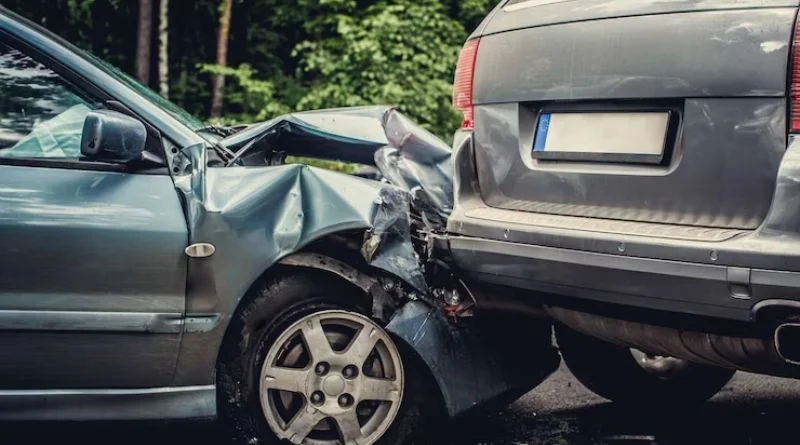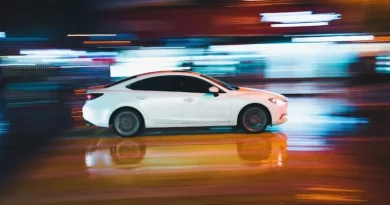Instances When A Car Accident Is Always Your Fault
Car accidents are a common occurrence on our roads. Whether it’s a minor fender bender or a serious collision, accidents can be stressful and confusing, especially when it comes to determining who is at fault. In some cases, it’s clear that one driver is responsible for the accident. Here are some instances when a car accident is almost always going to be considered your fault.
Rear-End Collisions
Rear-end collisions occur when one car hits the back of another car. In most cases, the driver who hits the car in front of them is considered at fault for the accident. This is because drivers are expected to maintain a safe following distance and to be aware of their surroundings at all times. If you hit the car in front of you, it’s usually because you were driving too closely or you weren’t paying attention.
There are some exceptions to this rule. For example, if the car in front of you suddenly stops or makes an unexpected maneuver, you may not be at fault for the accident. Additionally, if your brakes fail or there’s another mechanical issue with your car, you may not be held responsible for the accident. Ask an accident attorney like those at Shaw Cowart LLP to learn more about your vehicle collision case.
Running a Red Light or Stop Sign
When you approach a red light or stop sign, you’re required to come to a complete stop before proceeding. If you fail to do so and cause an accident, you’re usually considered at fault for the accident. This is because you were in violation of traffic laws and put yourself and others in danger by doing so.
There are some situations where you may not be at fault for an accident at an intersection. For example, if another driver runs a red light or stop sign and causes an accident, they would be considered at fault.
Making an Illegal Turn
When you make a turn, you’re required to follow the rules of the road and only turn when the law allows it. Therefore, if you make an illegal turn and cause an accident, you’re usually considered at fault for the accident. Once again, this is because you did not abide by the rules of the road and take the proper precautions when making the turn.
Luckily, there are some situations where you may not be at fault for an accident when making a turn. For example, if another driver runs a red light or stops a sign and hits you while you’re turning, they would be considered at fault for the accident.
Driving Under the Influence
If you’re driving under the influence of drugs or alcohol and cause an accident, you’re always considered to be at fault. This is because driving under the influence is illegal and puts other drivers on the road at risk. If you’re involved in an accident while under the influence, you could face criminal charges in addition to being held responsible for any damages or injuries that occur. Some consequences for driving under the influence are:
Legal Consequences: A person caught driving under the influence can face legal consequences, including fines, license suspension, community service, probation, and even jail time.
Increased Insurance Premiums: After a DUI conviction, a person’s auto insurance rates will likely increase significantly, or they may have difficulty finding a company that will insure them at all.
Mandatory Treatment: In some cases, a person convicted of DUI may be required to attend a drug or alcohol treatment program.
Ignition Interlock Device: Some states require drivers with DUI convictions to install an ignition interlock device in their vehicles. This device requires the driver to blow into a breathalyzer before starting the car, and the car will not start if the driver’s blood alcohol content is above a certain level.
Speeding
When you’re driving, you’re expected to obey the speed limit and to adjust your speed based on road conditions. If you’re driving too fast and cause an accident, you’re usually considered at fault for the accident. This is because you were driving recklessly and failed to exercise the necessary caution when driving.
There are some situations where you may not be at fault for an accident when speeding. For example, if another driver pulls out in front of you and you’re unable to slow down in time to avoid an accident, they would be considered at fault for the accident.
Distracted Driving
Distracted driving is a leading cause of car accidents in the United States. It is considered to be any activity that takes a driver’s attention away from the road and can significantly increase the risk of a car accident. Some common examples of distracted driving include:
Using A Cell Phone: Using a mobile device, including texting, emailing, browsing the internet, or using social media while driving, is one of the most dangerous forms of distracted driving. It takes your eyes off the road, your hands off the wheel, and your mind off the task of driving.
Eating Or Drinking: Eating or drinking while driving may seem like a harmless activity, but it can be a significant distraction. It requires a driver to take their hands off the wheel, and their attention is diverted from the road.
Self-Grooming: Applying makeup, combing hair, or grooming while driving can significantly distract a driver from the task at hand. These activities take a driver’s hands and eyes off the road, increasing the likelihood of an accident.
Reading Anything But Road Signs: Whether it be a book, map, or any other printed material while driving can be a significant distraction. It requires a driver to take their eyes off the road for an extended period, making them more likely to miss important traffic signals or signs.
While of course there are always multiple factors that impact the outcome of a car accident, there are a number of generally agreed-upon scenarios where one driver is at fault. Typically, these are situations when a driver is not fulfilling their duty of keeping themselves and others safe while on the road, and this results in an accident.




